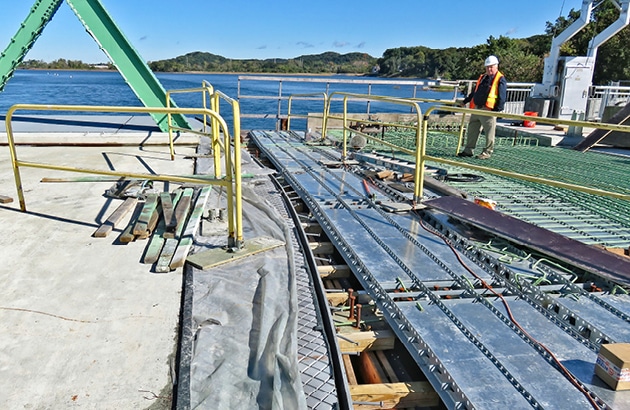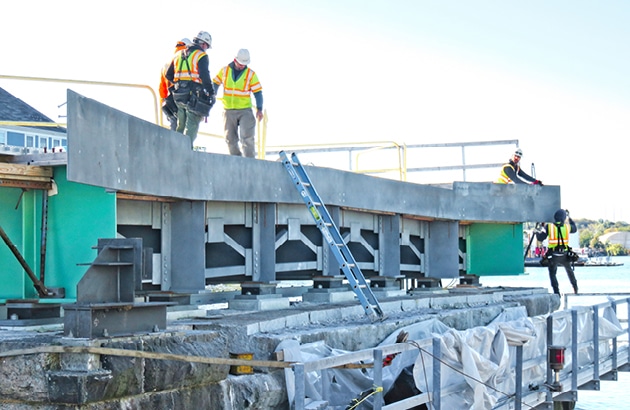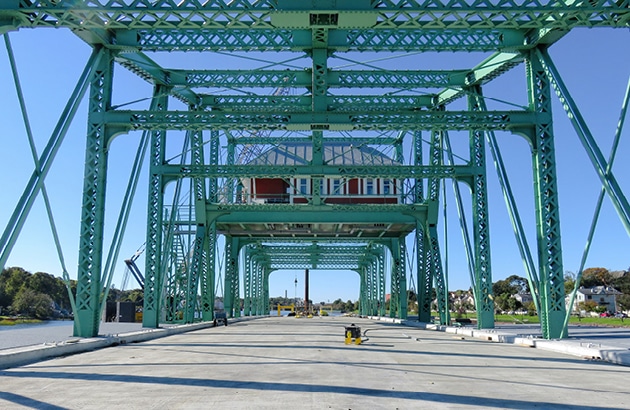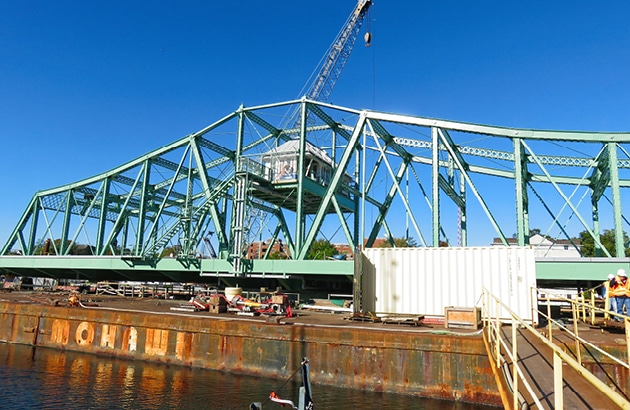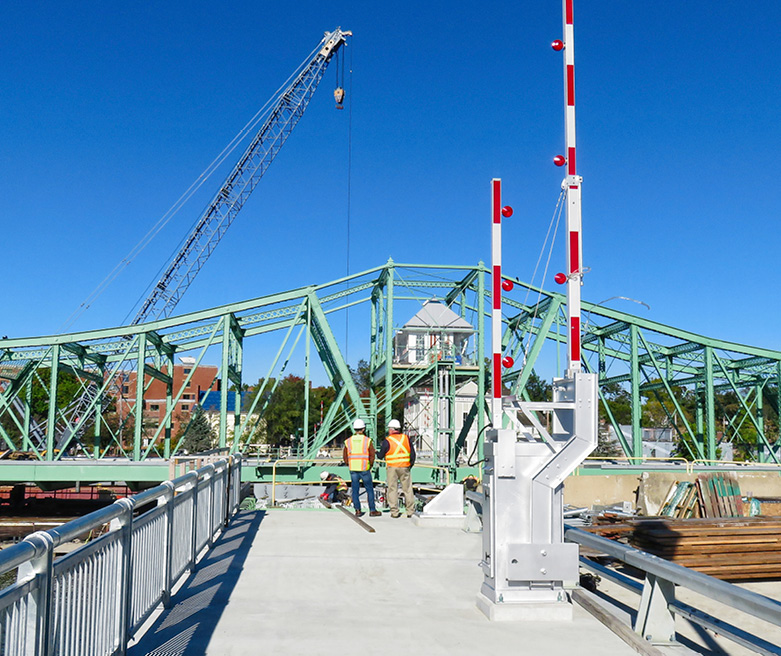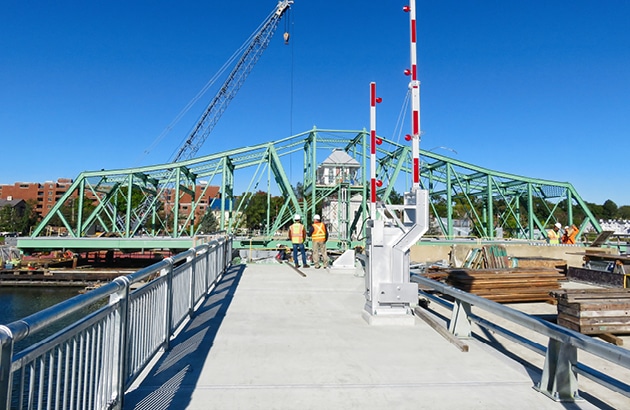
More than 30 years after STV provided design and in-depth inspection services for the last major rehabilitation of the Grand Avenue Bridge over the Quinnipiac River in New Haven, CT, the firm is again playing a key part in the more than 100-year-old moveable bridge’s latest rehabilitation.
STV was contracted by the City of New Haven to perform construction inspection services for the swing bridge’s rehabilitation. First erected in 1898, the Grand Avenue Bridge is a six-span swing bridge with the main center spans pivoting on the center pier. As part of this latest rehabilitation program, it is being reconstructed as a four-span bridge with the same center spans remaining movable.
Many of the bridge’s components are original to its construction. As such, the existing swinging mechanism is considered by some to be an antiquated system.
The rehabilitation program includes the demolition of existing approach span superstructures and its replacement with new composite girder superstructures on rehabilitated existing piers. The swing span deck and floor system were replaced with new stringers and a composite exodermic bridge deck, maximizing the compressive strength of concrete and the tensile strength of steel to provide a lighter structure so an improved live load capacity can be achieved. New abutments were designed for upland construction behind the existing ones, which remain in place to serve as retaining walls.
Most of the funding for the current $24.6 million project is being provided by the City of New Haven, with contributions from the State of Connecticut and the federal government. The project is expected to extend the structure’s overall service life by 20 years and significantly reduce the city’s annual maintenance costs.
Due to the bridge’s importance to the region’s transportation network – connecting the Fair Haven and Fair Haven Heights neighborhoods – the construction program is being accelerated to minimize the structure’s closure.
“The city doesn’t want the bridge out of service for too long,” said Stephen Bombero, Jr., P.E., senior resident engineer/construction manager. “Our team is working weekends to help keep the project on track.”
The bridge is expected to open in early 2022.
Nicholas Altebrando, P.E., STV vice president and technical director of the national bridge practice, referred to the Grand Avenue Bridge as “a very historic structure. There used to be a trolley line that ran across this bridge and the details and construction of the bridge are classic representations of its era.”
The last time STV provided engineering services on the bridge was in 1984, when the firm led the design of a major structural, mechanical, and electrical upgrade. It also provided construction inspection services for the swing span superstructure.
At this time, the reconstruction was performed in a unique way. For the bridge truss and floor system, the old bridge elements were essentially replaced in-kind using modern materials and methods, down to replacement bridge plaques. This even included a reconstruction of the wood-framed operator’s house on top of the truss down to the hip roof. The existing supporting steel for the truss and all the rim-bearing framing was retained.
The Quinnipiac River is a designated navigable waterway regulated by the U.S. Coast Guard. When barges or boats pass through, the bridge “rotates 90 degrees off a center point,” Altebrando said. For the latest rehabilitation, “the contractor is working on getting the center point precisely positioned,” he added.
Mohawk Northeast Incorporated is the contractor and Hardesty & Hanover provided engineering design services.
STV’s unique expertise in moveable bridge structures – especially historic ones like the Grand Avenue Bridge – allows the firm to serve its clients and stakeholders several different ways, Altebrando and Bombero said. The firm’s movable bridge group consists of nine mechanical and electrical systems specialists, who are based all over the country.
When performing construction inspection services for these historic structures, “you need to be very proactive and stay on top of things,” Bombero said. “With that approach, we’ve been able to keep the project on schedule.”
